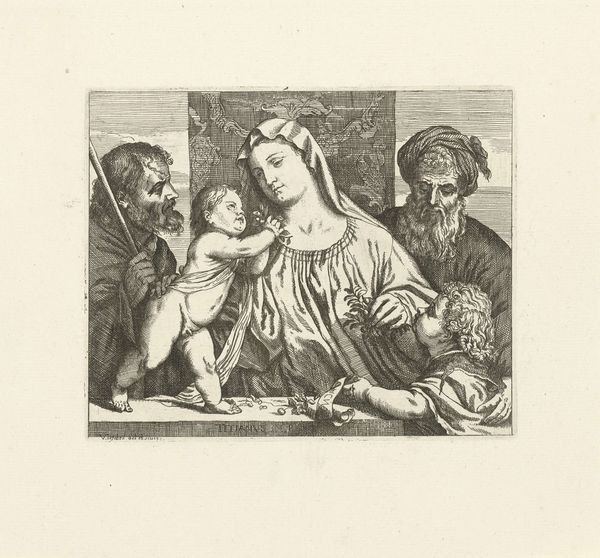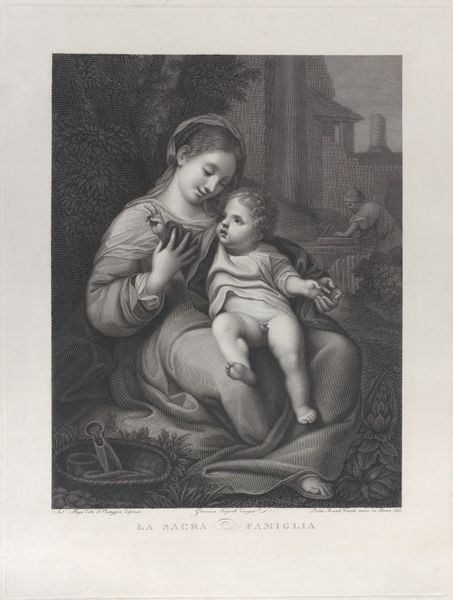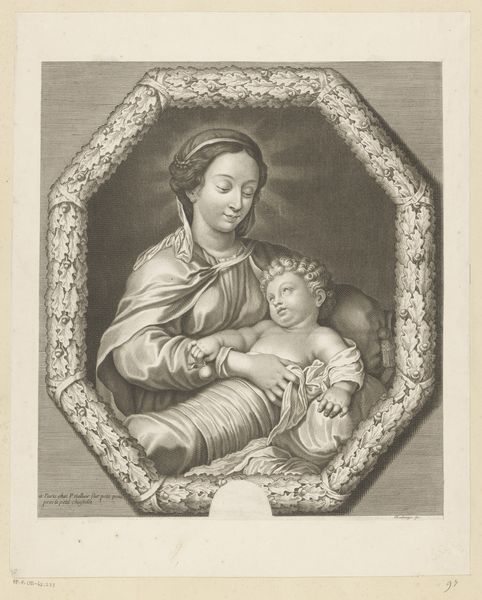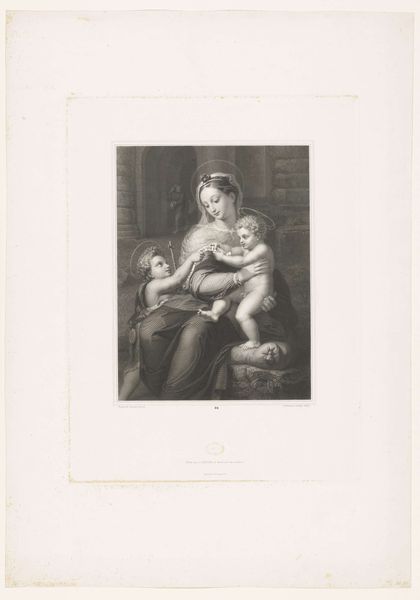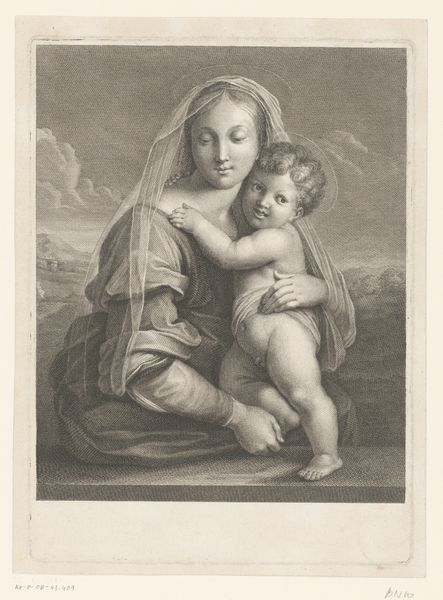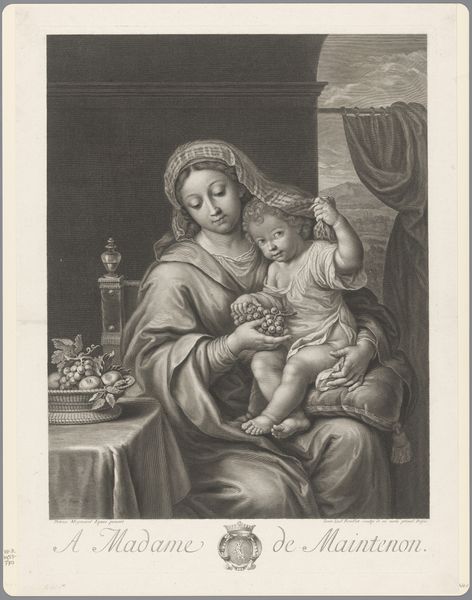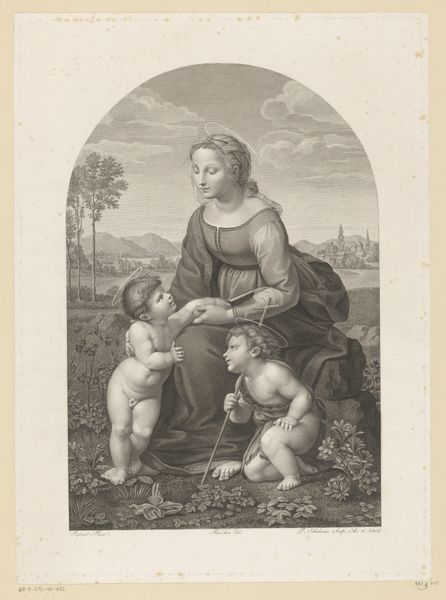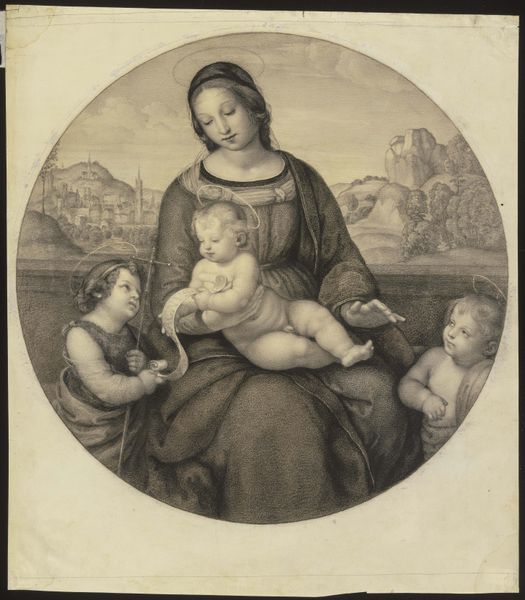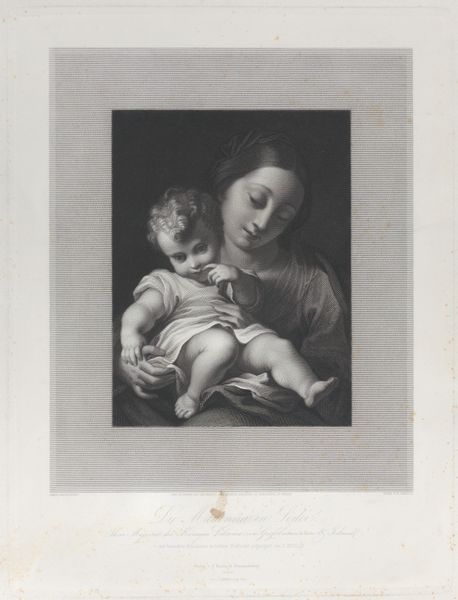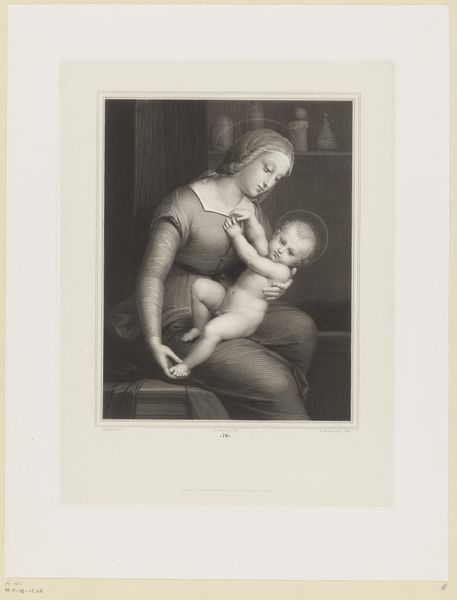
print, etching
#
portrait
# print
#
etching
#
portrait drawing
#
academic-art
#
italian-renaissance
Dimensions: 290 mm (height) x 255 mm (width) (plademaal)
Curator: There’s an interesting serenity to this print. What are your initial thoughts? Editor: A melancholy Madonna, isn't she? Almost as if she already foresees what's to come for the child in her arms. The print is Erling Eckersberg’s “Madonna med barnet,” likely dating from around the mid-19th century, held here at the SMK. It's an etching, a medium offering beautiful detail. Curator: Yes, Eckersberg was quite accomplished in printmaking. Note the controlled, precise lines, the way the hatching defines form and texture, the fall of the light on their faces. Etching, unlike engraving, allowed for more freedom and a range of tonal values, but still demanded considerable technical skill and specialized labor. He clearly was marketing it to evoke a sense of high Renaissance classicism through a popular medium for wider distribution. Editor: Precisely, and the availability is key to understanding the image's reach. Consider how readily accessible these prints were to a burgeoning middle class eager to embrace cultural refinement through readily purchased art, to bring the religious figure into a new domestic setting. The Italian Renaissance was already popular, it played an essential role in the social context. Curator: I agree. There's a strong influence of Raphael here. Note how the forms are simplified and idealized. The attention to line rather than color places focus on draftsmanship, and shifts away from sumptuousness towards didactic clarity in portraying spiritual themes to more potential buyers. Editor: And yet, one must consider where they hang it, for whom the work will decorate what wall? What impact would such imagery of the Virgin Mary have when placed amongst ordinary settings? What did its role do in the history of visual communication, its ability to spread and be visible and reproducible, which is one that should also consider who could not access them? Curator: Certainly the conditions of consumption speak to its value. It serves as a cultural commodity, imbued with symbolic value as much as aesthetic appreciation. It brings the aura of High Art to everyday life. A devotional piece, mediated through mercantile culture. Editor: In essence, Eckersberg gives us a religious iconography tailored to 19th-century bourgeois sensibilities, democratized, for better and for worse, through the very process of its making. Curator: So, a potent intersection of artistry and industry then, quite poignant indeed. Editor: Agreed, quite interesting for contemplation!
Comments
No comments
Be the first to comment and join the conversation on the ultimate creative platform.
